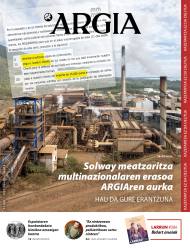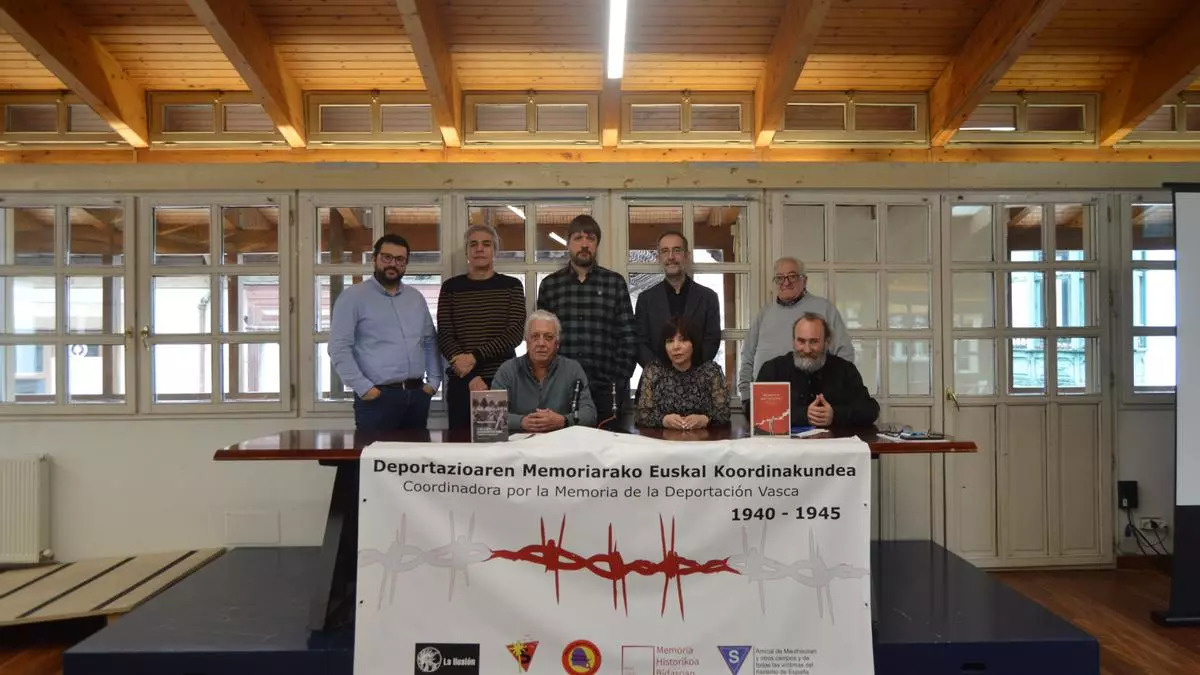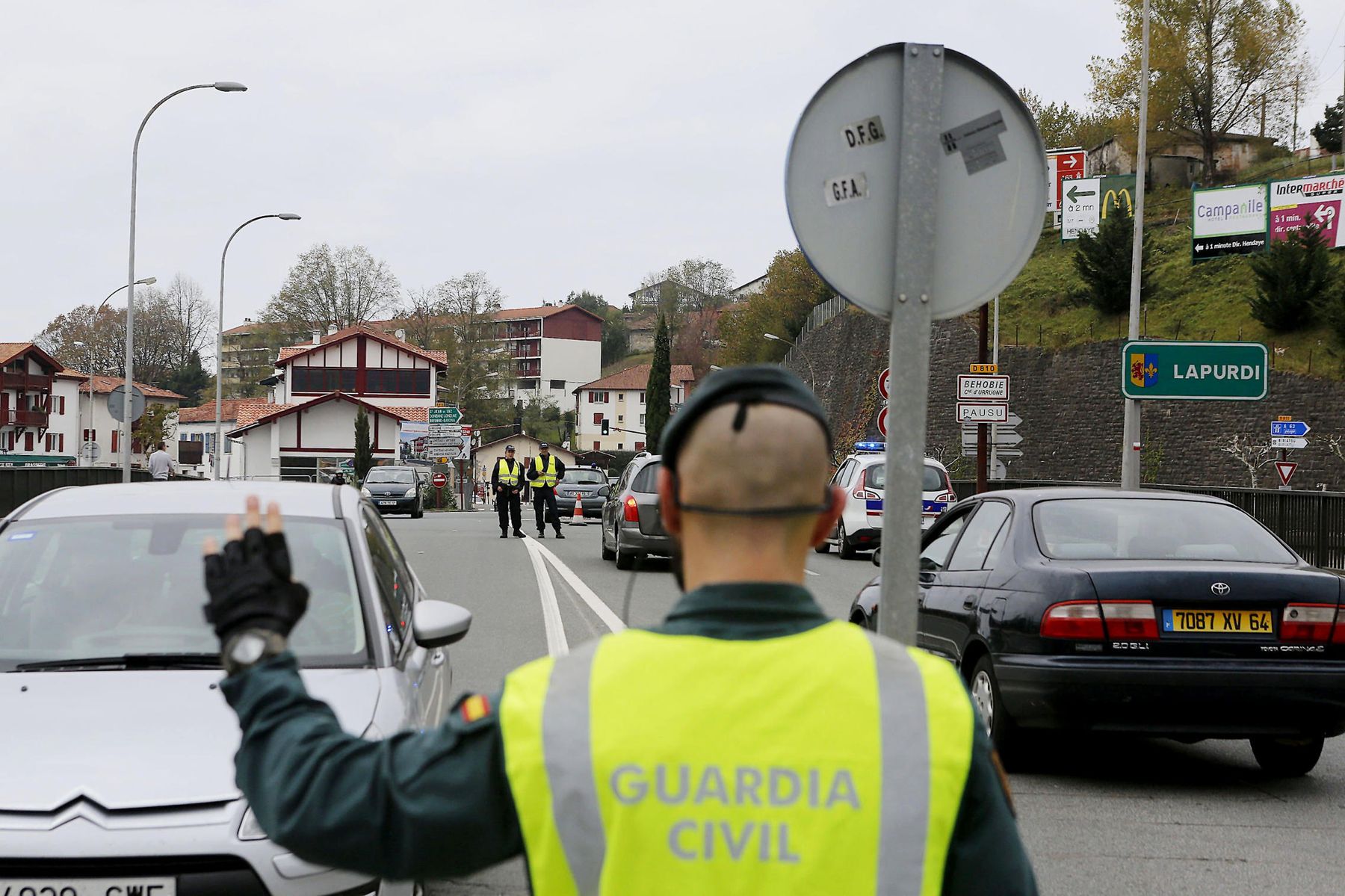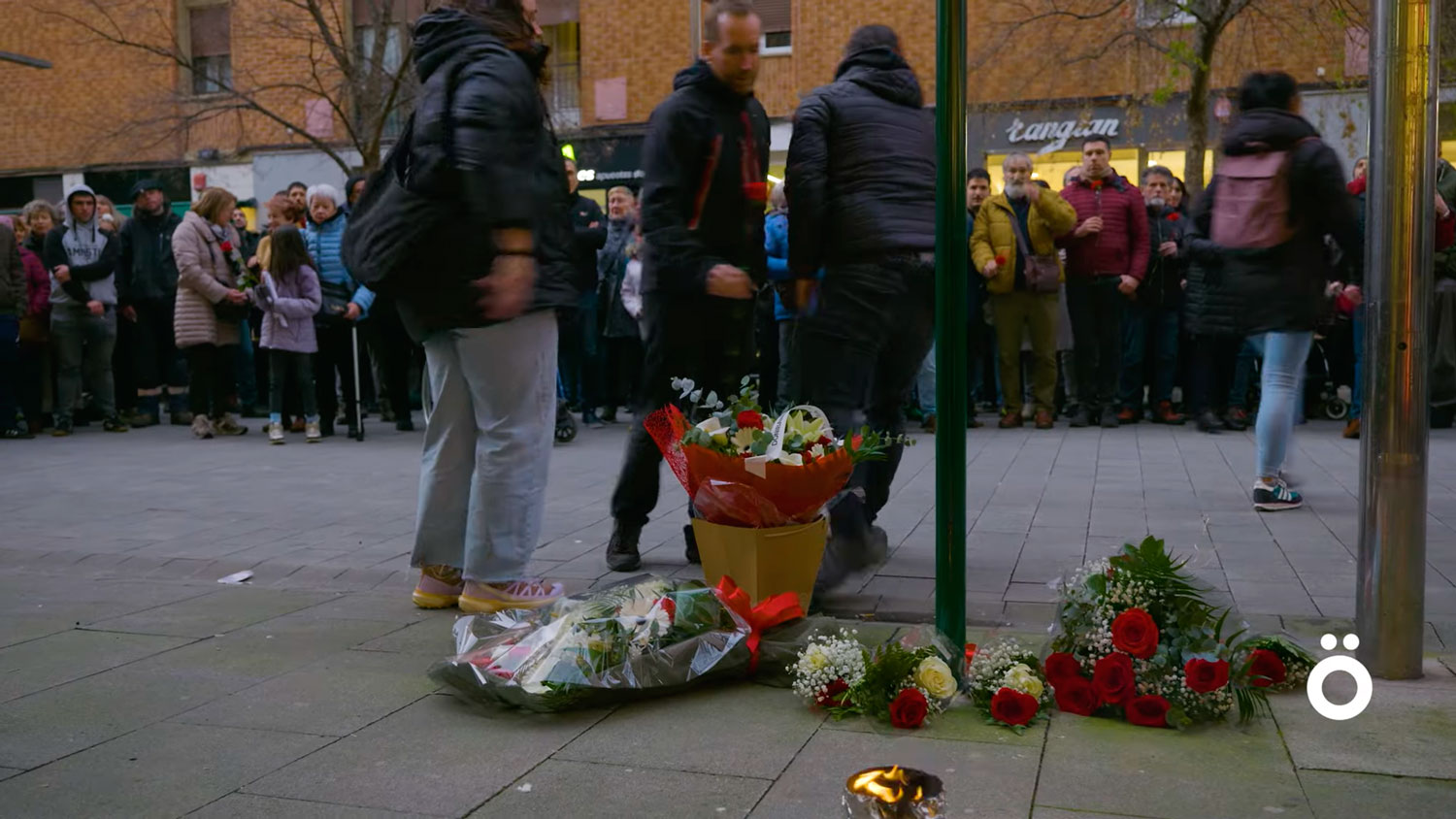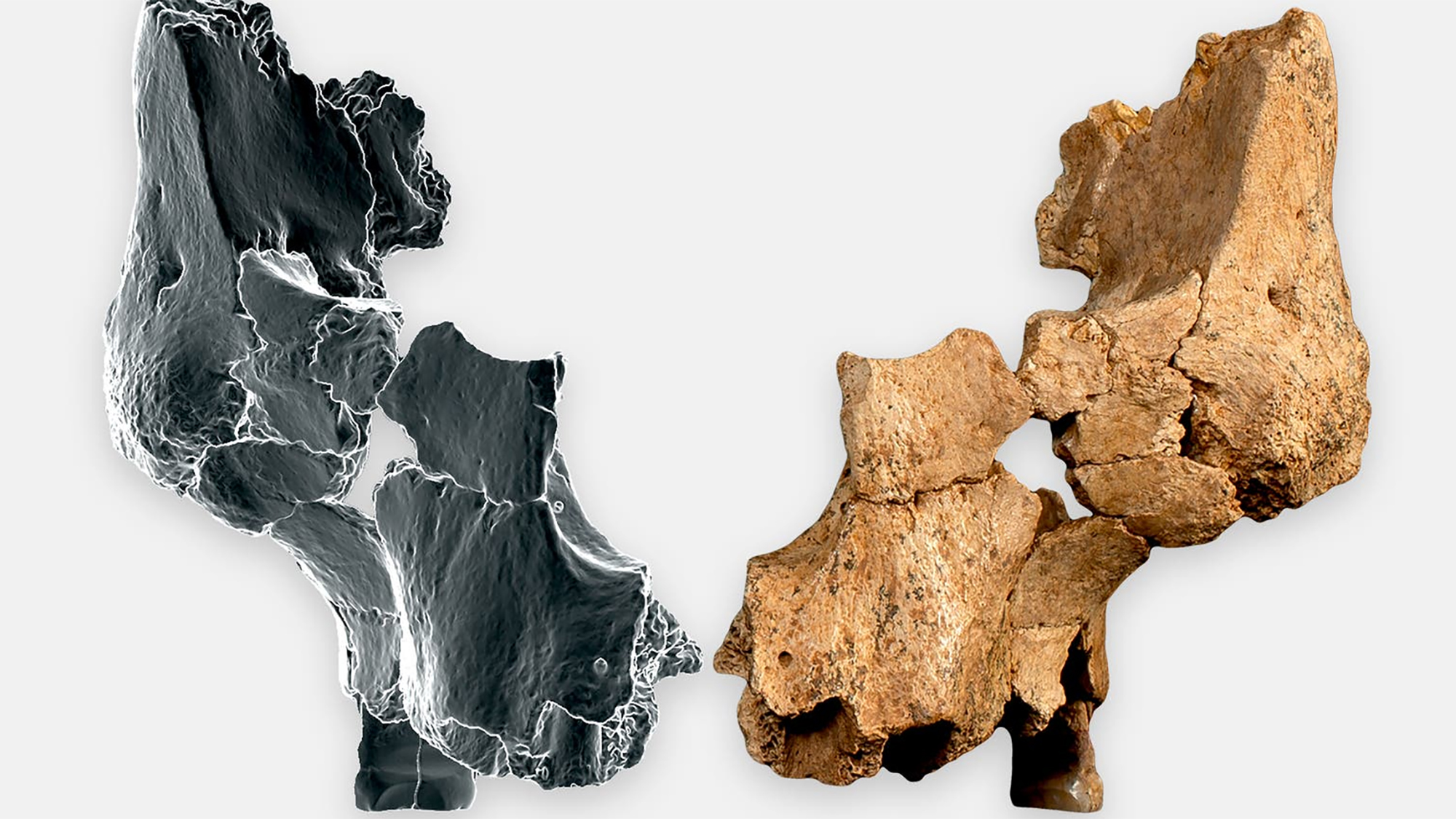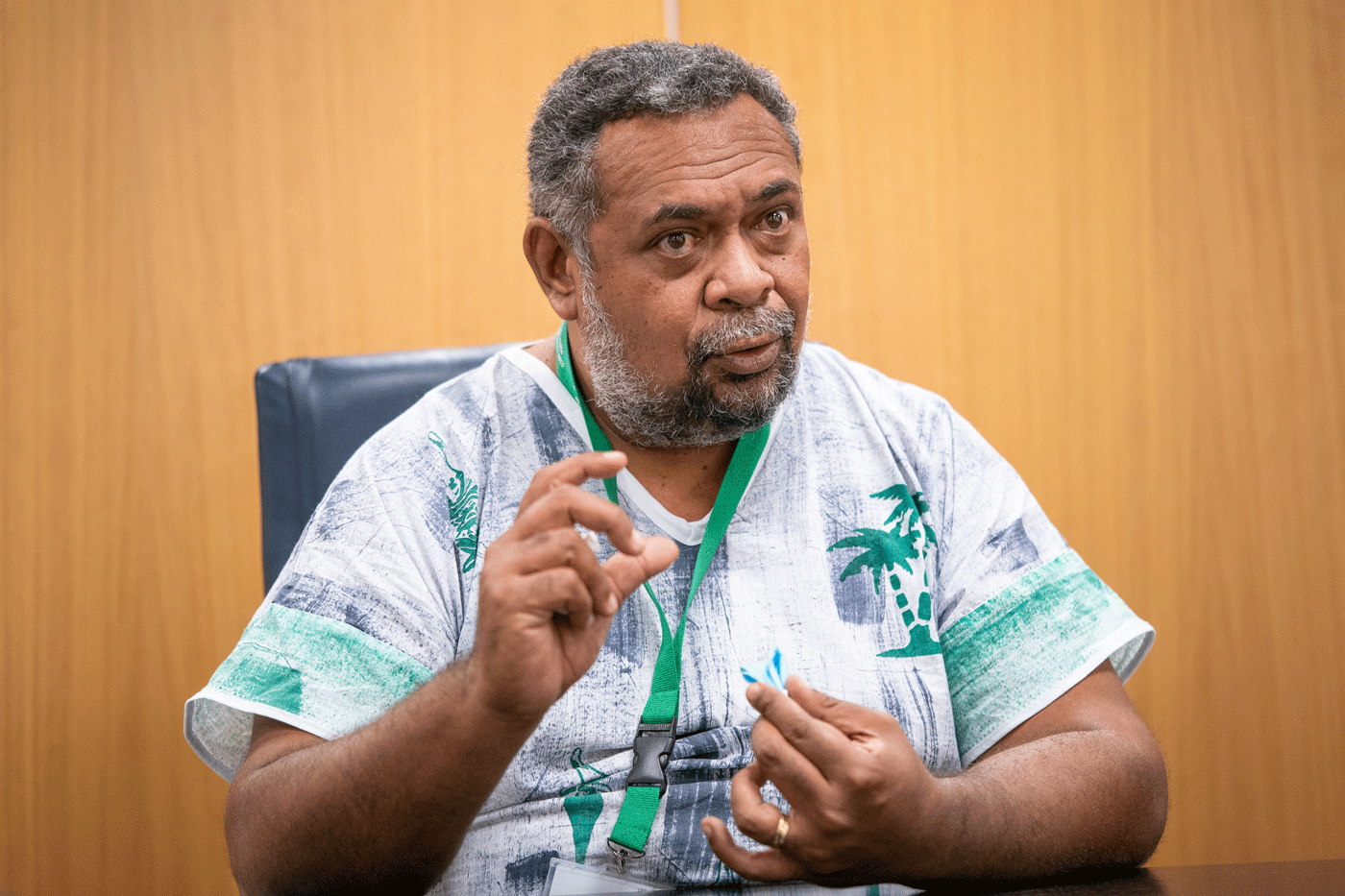A hundred years later, the threat of chemical weapons continues
- A century ago, in July 1923, the Spaniards used for the first time the so-called iperite or mustard gas against the civilian population of Arrife. Before, the powers of World War I had the well-proven chemical weapon against the soldiers. The consequences of this use are currently perceived as cancers by arriftarras. And we Europeans can also do so soon, as thousands of tonnes of oxidized bait capsules that are submerged in the North Sea are about to break.
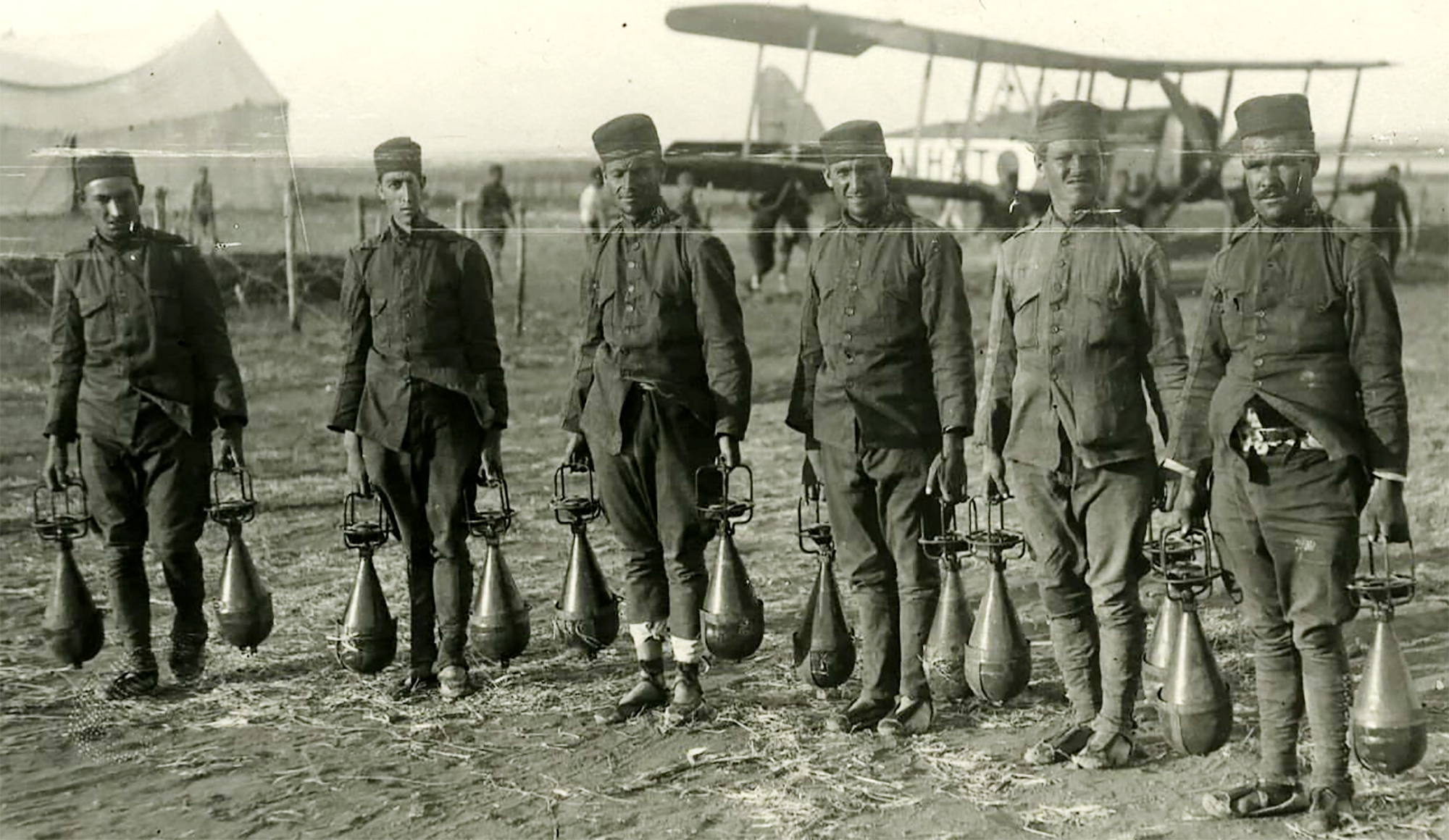
If you look at the town of Amesaurus from the sky, Google Earth shows you only the shadows of the humble buildings that accumulate in the eagle of a small mosque. Situated in the cabildo Temsamane, in the province of Driouch in northern Morocco, in the area where the Amazians live, it has the honour of passing through history: the Spaniards bombed for the first time the civilian population with chemical weapons in a country that is not even worth being on the Internet, just a hundred years ago, in the framework of the Arrife War.
Although its use is banned in Europe after the First World War, the colonial powers used toxic substances in many “non-civilised” peoples from 1919 – the Italians in Libya and Ethiopia, the British in Afghanistan…. But the wonderful idea of attacking the humble citizens with chemical weapons using planes was for the first time mistaken for the Spaniards.
In Madrid, every method of proceeding with the newly created Independent Republic of Arrif was applauded, including the use of chemical weapons.
On July 13, 1923, two Bristol F2b air planes appeared on the head of the Amesaurios and launched several X bombs against the citizens. They covered the streets and drapes with a cytotoxic cyperite agent, also called mustard gas because of its brown color. The campaign was only the beginning of a cruelty and a rattle, which opened terror until 1927 in the rearguard of that colonial war.
These indigenous traitors…
The territory of Arrife had been within the Spanish protectorate since the early twentieth century and its peoples rebelled constantly to face the occupation. After in 1921 the guerrillas led by Abd the Crime shut down thousands of Spanish army soldiers at Annual, the war increased a bloodletting.
From Madrid, every method to step up the newly created Independent Republic of Arrife was applauded, including chemical weapons: “I have always been very opposed to the use of suffocating gases against these indigenous people, but by doing what they have done, I must use them gladly after betrayal and petty behaviour.” This is what Moroccan high commissioner Damaso Berenguer said, and so he translated the Basque Joseba Sarrionandia, are we Moors in the fog? (Pamiela, 2010) for the book.
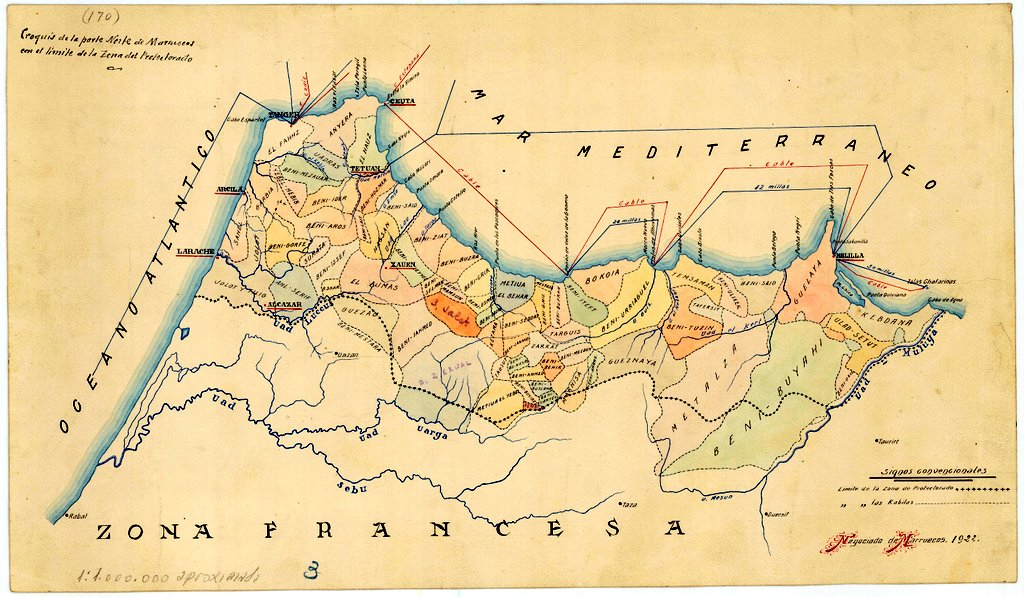
According to Sarrionandia in his work, “the reason for promoting chemical weaponry after the defeat of Annual was the inability and desire for revenge of the Spanish army.” These X bombs were given other names: C-1 had 50 kilos of iperite, C210 kilos and C5 20 kilos. The latter was the most widely used. On the contrary, the explosive C3 carried hydrogen; C4 carried chloropicrin…
And so they were bombed in a relentless manner, not only the possible holes in the topo of the guerrillas, but also the Beni Urriagel and many other Amazonian peoples inside.
This is not only stated by the Basque writer, but also by the Spanish Army: “Since 1925 the use of these weapons (sic) has improved. In the evening they began to bomb, because there was less wind and because the freshness allowed for more time, in order to achieve the necessary duration and concentration,” said Fernando Villena, a diplomat and advisor to the Spanish Ministry of Defence.
In 1925, thousands of Spanish soldiers landed in the coastal village of Al-Hoceima, led by Pamplona general José Sanjurjo, also called Villa Sanjurjo. These sites were also enthusiastically filled with lethal gas. Everything served to fix the skin and get rid of the shame of those wild rebels; Paulo Yanzi explained the atmosphere of that moment well in the series of verses “From the War of Africa”:
We
lose the old lands,
the modern armaments, all our
kingdoms; they have also lost the
tender children of others;
and what shame it governs,
it makes
our troop brakes laugh!
Of course, the Spanish reactionaries have always tried to downplay the massacre carried out. But Villena herself gives a huge number of figures: in the Melilla factory only 30,000 to 55,000 tons of iperites were created, “which would make between 4,000 and 7,000 C5 explosives.” In addition, the army consultant says they had 500 phosphate bombs purchased from the British.
Although British and French surpluses were initially used during the First World War, the Spaniards soon launched the chemical weapons development programme. After a long period of silence in the 1990s, German journalists Rudibert Kunz and Rolf Dieter-Müller published the study Giftgas gegen Abd El Krim (“Poisonous Gas against Crime Abd”).
.jpg)
With numerous tests they demonstrated that Germany covertly helped the Spanish monarch Alfonso XIII in setting up factories to create iperite, both in Madrid, in the military factory of La Marañosa, today in operation, and in Melilla, although the Pact of Versailles of 1919 prohibited the production of these weapons.
50% of children admitted with cancer to the oncology hospital in Rabat and 80% of adults in the Arrif region are amazigas.Los experts say that these chemical weapons are “mutagenic”, that is, that the damage is also suffered by descendants.
But it is believed that chemical weapons also occurred elsewhere. And no one will be surprised that Euskal Herria's arms industry enters that industry, as no one is surprised to see SAPA, Sener and so on producing tanks and drones for today's wars. According to Sarrionandia, according to the English secret services, these were carried out in Talleres de Guernica, S.A., where it appears that shells for bait shells were produced.
Most Amazians in the oncology of Rabat
Mohamed opens the basement iron door under the house and shows a tight housing: “An aircraft dropped the bombs here and then dropped this shell in our house.” Tarik is talking to El Idrissi, along with Javier Rada, Arrhash! author of the documentary. Essential film to understand the scar of Spanish arrifes with chemical weapons, released in 2010 and visible in the multimedia channel Argia.eus.
Mohamed was in his mother's womb when the bombing occurred: “Her mother coughed to death and her sisters became blind,” she says side by side. A brother died shortly, “poisoned water drank from the tap and fell bankrupt.” The Iperita was attached to all the walls of the buildings and burned the skin if touched. Mohamed says the whole herd was blind and the land ceased to be productive: “There we had a cacti but it rots, we also planted almonds and nothing, it rots…” It is eaten with the smell, with the yellowing of the iperitage… “They called it venom, from the Amazon to the Arrhash.”
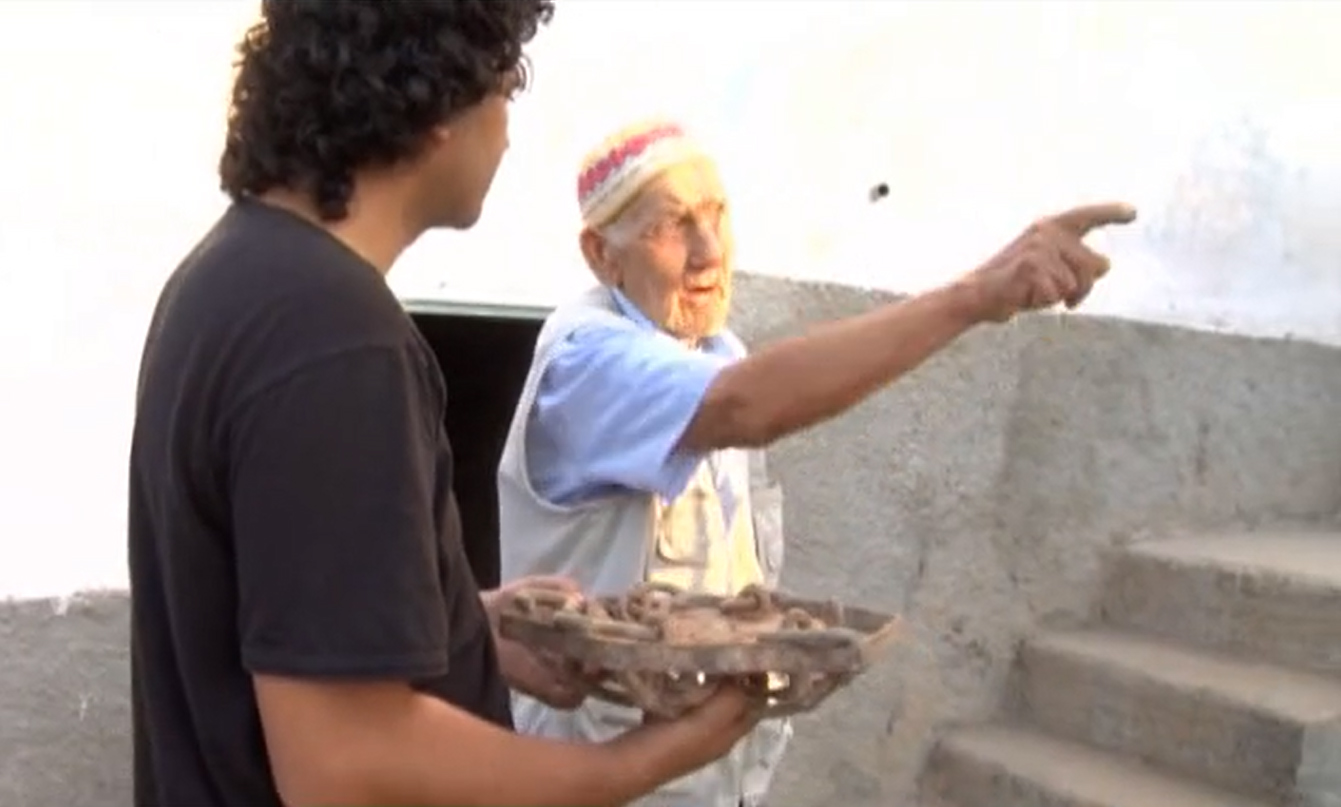
The documentary includes historians Sebastián Balfour and María Rosa Madariaga. According to the latter, it is undeniable that iperitage causes cancer, but it is impossible to know how many people have died in Arrif as a result of chemical weapons. Diseases were never monitored, and the Moroccan Government, skillful oppressor of the arrays, did not contribute to this – when they rebelled in 1958, attacked Hassan with napalm and phosphorus II.ak.
The only objective data is that 50% of children admitted with cancer in the oncology hospital in Rabat and 80% of adults belong to the Arrif region. Dr. Mimoum Charki, Honorary President of the Amazon World Assembly (AMA), explained that Japanese Italian and American geneticists have ensured that these chemical weapons are “mutagenic”, that is, that the descendants of the victims also suffer damage. And don't talk about psychological effects better.
AMA has often asked the Spanish State to recognize and review what it has done. For the last time in 2020, sending a letter directly to the king of Spain, Felipe VI, which can be read in the press dossier attached to the website of the institution, to Zarzuela, has not received a seed of the majesty majesty.
The ERC also took the issue for the umpteenth time to the Madrid Congress in 2018, in vain Josep Borrell, then minister of the Government of Spain, replied with a phrase “it is time to close wounds”. To close the wounds, you first have to get the poison out.
Do you know where the Great War iperite is?
As in Amesauron, Taurit or Al-Hoceima, in Arrife, chemical weapons were previously used in Europe against soldiers during the First World War: Ypresen, Loos, Wiltejen… The water of war was the largest laboratory of chlorine, phosphate, and iperite, which according to some caused 90,000 deaths.
After the Second World War, many of the powers involved in these conflicts decided to throw their chemical weapons surpluses into the sea, “because it was the cheapest solution”. This is explained by the documentary Menaces en mers du Nord (“Menaces in the North Seas”), directed by Jacques Loeuille in 2018 and visible on Youtube. In total there are three billion tonnes of chemical explosives submerged in the North Sea and the Baltic.
.jpg)
Sometimes they plunged ships overflowing with explosives. Other times, they dropped capsules filled with mustard gas from ships very close to the coast, with ramps. For example, on the Belgian beaches of Knokke there are thousands of tons a meter deep.
But in many cases you cannot know exactly where the chemical weapons are. In the French State these spaces have been declared “military secrets” and the archives are closed. At some point, fishermen find new chemical weapons sites due to accidents. A report prepared by the Popular Commission for the Protection of the Marine Environment of the Atlantic published maps of specific conventional and chemical weapons deposits, as well as more recent discoveries. Attention should be paid to the proximity of some of these “landfills”.

But the most worrying thing is that pollution can begin to spread soon. According to experts, in 80 or 100 years the capsules have oxidized and corrosion has begun to release the iperite interior. According to the Moscow Institute of Oceanography, it would be sufficient to release 1/6 of the substances to eliminate the entire underwater life of the Baltic. In addition, contamination can affect the food chain because animals are metabolising these chemicals.
“This is a real timebomb,” says marine biologist Thomas Lang in the documentary. The explosives that caused the military massacre a hundred years ago can now create an environmental massacre.
Deportazioaren Memoriarako Euskal Koordinakundeak aintzat hartu nahi ditu Hego Euskal Herrian jaio eta bizi ziren, eta 1940tik 1945era Bigarren Mundu Gerra zela eta deportazioa pairatu zuten herritarrak. Anton Gandarias Lekuona izango da haren lehendakaria, 1945ean naziek... [+]
Guardia Zibilaren historia bat - Hemendik alde egiteko arrazoiak izenburupean, datorren astean argitaratuko dugun 305. LARRUN aldizkariaren pasarte batzuk dira ondorengoak, erakunde armatuaren sorrera garaietan girotutakoak.
Iazko uztailean, ARGIAren 2.880. zenbakiko orrialdeotan genuen Bego Ariznabarreta Orbea. Bere aitaren gudaritzaz ari zen, eta 1936ko Gerra Zibilean lagun egindako Aking Chan, Xangai brigadista txinatarraz ere mintzatu zitzaigun. Oraindik orain, berriz, Gasteizen hartu ditu... [+]
Aranzadi Zientzia Elkarteko Etnografia Sailaren zuzendari berria da Maite Errarte Zurutuza (Beasain, 1995), urrian Fermin Leizaolaren lekukoa hartu ondoren. Kultura materiala aztertzen jarraitzeko beharra azpimarratu du, gizartearen memoria eta bizimodu aldaketak erregistratzeko... [+]
Eskultura grekoerromatarrek bere garaian zuten itxurak ez du zerikusirik gaurkoarekin. Erabilitako materiala ez zuten bistan uzten. Orain badakigu kolore biziz margotzen zituztela eta jantziak eta apaingarriak ere eransten zizkietela. Bada, Cecilie Brøns Harvard... [+]
Japonia, XV. mendea. Espioitzan eta hilketa ezkutuetan espezializatutako eliteko talde militarra sortu zen. Edo horixe uste du behintzat Stephen Turnbull historialari britainiarrak. Beste aditu batzuen ustez, askoz lehenago sortu ziren ninjak, duela 2.300-2.500 urte inguru. Eta... [+]
Gogora Institutuak 1936ko Gerrako biktimen inguruan egindako txostenean "erreketeak, falangistak, Kondor Legioko hegazkinlari alemaniar naziak eta faxista italiarrak" ageri direla salatu du Intxorta 1937 elkarteak, eta izen horiek kentzeko eskatu du. Maria Jesus San Jose... [+]
Familiak eskatu bezala, aurten Angel oroitzeko ekitaldia lore-eskaintza txiki bat izan da, Martin Azpilikueta kalean oroitarazten duen plakaren ondoan. 21 urte geroago, Angel jada biktima-estatus ofizialarekin gogoratzen dute.
Atapuercako aztarnategian hominido zahar baten aurpegi-hezur zatiak aurkitu dituzte. Homo affinis erectus bezala sailkatu dute giza-espezieen artean, eta gure arbasoek Afrikatik kanpora egindako lehen migrazioei buruzko teoriak irauli ditzake, adituen arabera.
Chão de Lamas-eko zilarrezko objektu sorta 1913an topatu zuten Coimbran (Portugal). Objektu horien artean zeltiar jatorriko zilarrezko bi ilargi zeuden. Bi ilargiak apaingarri hutsak zirela uste izan dute orain arte. Baina, berriki, adituek ilargietan egin zituzten motibo... [+]
Hertfordshire (Ingalaterra), 1543. Henrike VIII.a erregearen eta Ana Bolenaren alaba Elisabet hil omen zen Hatfield jauregian, 10 urte besterik ez zituela, sukarrak jota hainbat aste eman ondoren. Kat Ashley eta Thomas Parry zaintzaileek, izututa, irtenbide bitxia topatu omen... [+]
Urte bat beteko da laster Pazifikoko Kanaky herriko matxinada eta estatu-errepresiotik. Maiatzaren 14an gogortu zen giroa, kanaken bizian –baita deskolonizazio prozesuan ere– eraginen lukeen lege proiektu bat bozkatu zutelako Paristik. Hamar hilabete pasa direla,... [+]
Kanakyko Gobernuko kide gisa edo Parisekilako elkarrizketa-mahaiko kide gisa hitz egin zezakeen, baina argi utzi digu FLNKS Askatasun Nazionalerako Fronte Sozialista Kanakaren kanpo harremanen idazkari gisa mintzatuko zitzaigula. Hitz bakoitzak duelako bere pisua eta ondorena,... [+]









